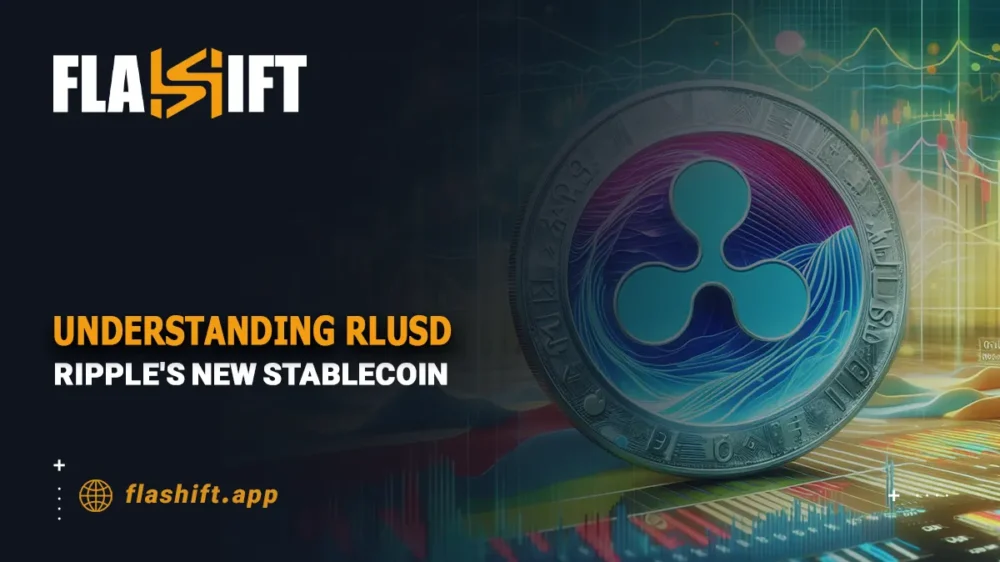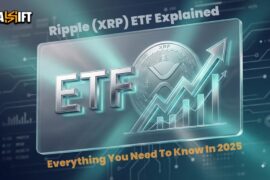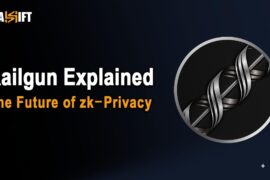- What is RLUSD?
- How RLUSD Differs from Other Stablecoins
- Integration with XRP Ledger: How RLUSD Operates and Its Technical Implications
- Potential Use Cases for RLUSD: Cross-Border Payments and DeFi
- Market Reception and Future Outlook: Analyzing the Initial Market Response to RLUSD and Predictions for Its Adoption
- FAQ
The RLUSD, is Ripple‘s USD-pegged stablecoin, a state-of-the-art digital asset designed to answer the needs for stability and efficiency in the fast-changing cryptocurrency market. The RLUSD is issued on the XRP Ledger, and it’s pegged at a 1:1 basis with the US dollar to insure very low price-volatility. It maintains the speed and low cost of blockchain transactions.
The following article will provide insight into the basic concept of RLUSD, its peculiar features, and its possible implications for the general crypto environment. Understanding Ripple’s strategic step allows us to understand exactly how stablecoins like RLUSD shape the future of decentralized finance.
What is RLUSD?
RLUSD is Ripple’s USD-pegged stablecoin, designed to harness the stability of the fiat currency while offering the same speed, efficiency, and decentralization as blockchain. It runs on the XRP Ledger; hence, the value is pegged at 1:1 to the US Dollar, making RLUSD a sound and consistent digital asset that can be used in most cases. RLUSD, powered by Ripple’s robust blockchain infrastructure, addresses some of the key pain points in the crypto space: volatility and inefficiency in cross-border transactions.

Key Features of RLUSD
- USD Peg and Stability
RLUSD is fully backed by US Dollar reserves, ensuring that each unit of the stablecoin maintains a consistent value equivalent to one US Dollar. This peg eliminates the price volatility common in cryptocurrencies, making RLUSD an attractive option for payments, remittances, and savings.
- Built on the XRP Ledger
The XRP Ledger is known for its scalability, speed, and low transaction costs, and RLUSD inherits these advantages. Transactions are settled in seconds and cost a fraction of a cent, making RLUSD a cost-effective alternative to traditional financial systems.
- Cross-Border Efficiency
Ripple has long been a leader in enabling efficient cross-border payments. RLUSD extends this functionality by providing a stable intermediary asset, facilitating fast and affordable global transactions without the complexities of fluctuating exchange rates.
- DeFi Compatibility
RLUSD integrates seamlessly with decentralized finance (DeFi) applications on the XRPL and other platforms. This opens up opportunities for lending, borrowing, staking, and liquidity provision, making it a versatile tool for users and institutions alike.
- Regulatory Transparency
Ripple emphasizes compliance and transparency in its operations. RLUSD is backed by reserves held in audited and secure accounts, ensuring trust and reliability for users. This regulatory focus positions RLUSD as a stablecoin suitable for both retail users and institutional adoption.
- Real-Time Settlement
With RLUSD, transactions are finalized in real-time, eliminating the delays often experienced with traditional banking systems. This feature is especially valuable for businesses and individuals who need immediate access to funds.
The Broader Impact of RLUSD
RLUSD is a strategic move by Ripple to bridge the gap between traditional finance and the digital economy. With Ripple offering a stable and secure digital asset, it’s best positioned to drive wide-scale adoption in both emerging and established markets. From frictionless remittances, through powering DeFi applications, to enabling fast and affordable payments, RLUSD is about to play a significant role in shaping the future of financial transactions.
This stablecoin underscores Ripple’s commitment to innovation and inclusivity, offering users a reliable and efficient way to participate in the global digital economy.
How RLUSD Differs from Other Stablecoins
Stablecoins like RLUSD, USDT (Tether), and USDC (USD Coin) share a common goal of providing price stability in the volatile cryptocurrency market. However, each is built with distinct features, technical frameworks, and use cases. Below is a detailed comparison highlighting how RLUSD stands apart from its established counterparts, USDT and USDC.
- Blockchain Infrastructure
RLUSD: Built on the XRP Ledger (XRPL), RLUSD benefits from XRPL’s high-speed transactions, scalability, and extremely low fees. The ledger’s decentralized architecture ensures efficiency, making RLUSD ideal for cross-border payments and decentralized finance (DeFi).
USDT and USDC: Both are issued on multiple blockchains, including Ethereum, Binance Smart Chain, and others. While this multi-chain support enhances compatibility, it often leads to higher fees and congestion, especially on Ethereum, where gas fees can be prohibitive.
- Primary Use Cases
RLUSD: Ripple specifically designed RLUSD to complement its cross-border payment solutions. The stablecoin is optimized for real-time settlement and efficient money transfers, catering to both retail users and enterprises.
USDT: USDT is predominantly used for trading on cryptocurrency exchanges. Its widespread adoption makes it the go-to stablecoin for quick trading and arbitrage opportunities.
USDC: With a strong emphasis on transparency and compliance, USDC has positioned itself as a trusted stablecoin for institutional use, payments, and DeFi activities.
- Transaction Costs
RLUSD: Thanks to the XRP Ledger’s low-cost structure, RLUSD transactions are extremely inexpensive, typically costing fractions of a cent. This makes RLUSD a practical option for frequent and high-volume transactions.
USDT and USDC: The cost of transacting USDT and USDC depends on the blockchain used. On Ethereum, gas fees can range from a few dollars to significantly higher during network congestion, which can be a barrier for smaller transactions.
- Regulatory Compliance and Transparency
RLUSD: Ripple emphasizes regulatory compliance and transparency, backing RLUSD with fully audited USD reserves. This positions RLUSD as a reliable choice for both institutional and retail users who prioritize trust.
USDT: Tether has faced criticism over its lack of transparency regarding its reserves and regulatory scrutiny. While it claims full backing, periodic controversies have raised concerns about its operational reliability.
USDC: Circle, the issuer of USDC, has prioritized full reserve transparency and compliance with US regulations. It regularly publishes audited reports, fostering confidence among users.
- Settlement Speed
RLUSD: Transactions on the XRPL settle in 3–5 seconds, offering near-instant finality and making RLUSD highly efficient for time-sensitive transfers.
USDT and USDC: Settlement speed varies by blockchain. While Ethereum-based USDT and USDC can experience delays due to network congestion, alternatives like Solana or Binance Smart Chain offer faster settlements.
- Ecosystem Integration
RLUSD: Designed to integrate deeply within Ripple’s ecosystem, RLUSD is particularly well-suited for cross-border payments and remittances, supporting Ripple’s vision of connecting traditional finance with blockchain.
USDT and USDC: Both stablecoins boast broader adoption across exchanges, wallets, and DeFi platforms due to their longer presence in the market and multi-chain support.
Conclusion
While USDT and USDC dominate the stablecoin space with widespread adoption and multi-chain presence, RLUSD introduces unique advantages through its integration with Ripple’s XRP Ledger. Its low transaction fees, real-time settlement, and focus on regulatory compliance position RLUSD as a compelling alternative for cross-border payments, enterprise solutions, and DeFi applications. By leveraging Ripple’s expertise and infrastructure, RLUSD is poised to carve out its niche in the rapidly growing stablecoin market.
Integration with XRP Ledger: How RLUSD Operates and Its Technical Implications
RLUSD is seamlessly integrated with the XRP Ledger (XRPL), leveraging the blockchain’s robust architecture to deliver an efficient, scalable, and cost-effective stablecoin solution. The XRP Ledger, renowned for its speed and reliability, offers RLUSD a unique foundation for enabling real-time financial transactions and decentralized applications. Below, we explore how RLUSD operates on the XRPL and its technical implications.
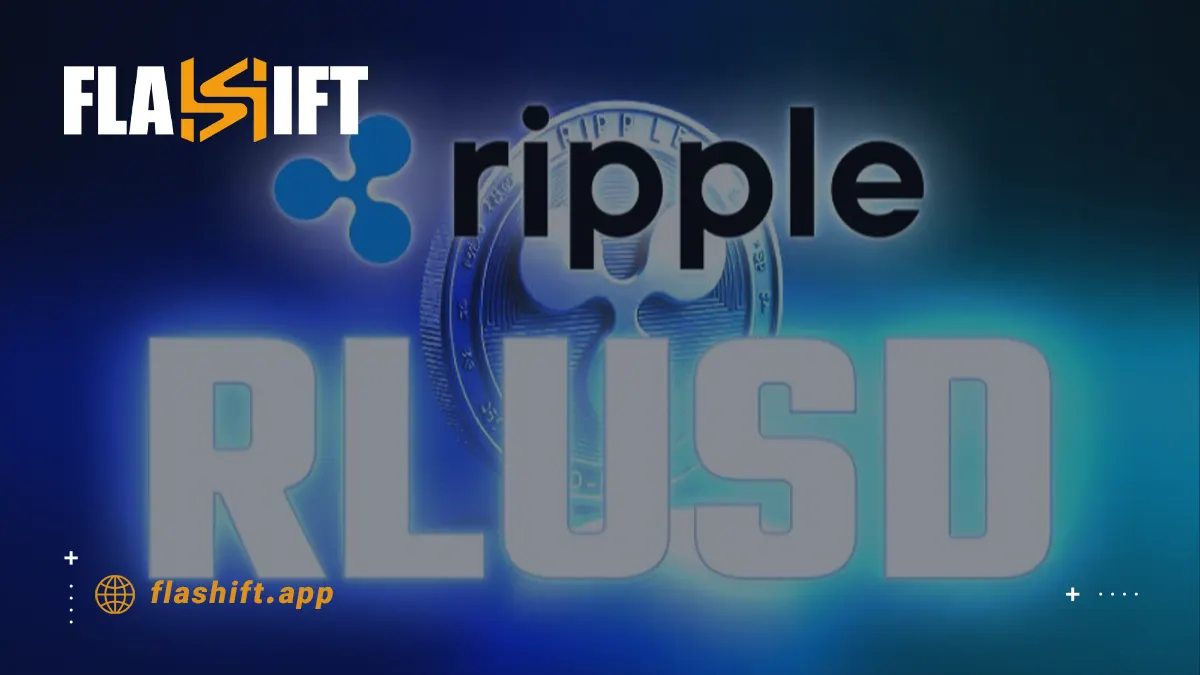
Key Features of RLUSD on the XRP Ledger
- Fast and Efficient Transactions
The XRPL processes transactions in 3–5 seconds, making RLUSD transactions almost instantaneous. This speed is critical for use cases like cross-border payments, where traditional systems can take days to settle.
- Low Transaction Costs
One of the standout features of the XRPL is its minimal transaction fees, typically fractions of a cent. RLUSD benefits directly from this efficiency, enabling high-frequency or micro-transactions without the burden of prohibitive fees.
- Decentralization and Security
The XRP Ledger operates through a decentralized network of validators, ensuring trust and security in every transaction. RLUSD transactions are verified and settled on this network, providing users with transparency and immutability.
- Built-In Tokenization
The XRPL is designed with native tokenization capabilities, allowing RLUSD to be issued and managed directly on the ledger. This eliminates the need for additional smart contracts, reducing complexity and enhancing security.
- Interoperability with XRPL Features
RLUSD is fully interoperable with other functionalities of the XRP Ledger, such as escrow, payment channels, and decentralized exchange (DEX) capabilities. These features enable advanced use cases like conditional payments, real-time liquidity provisioning, and seamless swapping between digital assets.
Technical Implications
- Enhanced Scalability
The XRPL can handle up to 1,500 transactions per second (TPS), significantly outpacing most other blockchains. This scalability ensures that RLUSD can support high transaction volumes without compromising performance, making it ideal for global adoption.
- Trustless Operations
Unlike some stablecoins that rely on third-party entities for transaction verification, RLUSD operates directly on the XRPL’s consensus algorithm. This trustless mechanism ensures that transactions are transparent and resistant to tampering.
- Programmability
The XRPL allows developers to build applications and financial tools around RLUSD, such as payment gateways, remittance platforms, and DeFi protocols. This programmability fosters innovation and expands RLUSD’s use cases.
- Cross-Border Optimization
Ripple’s core focus on cross-border payments aligns with the XRPL’s ability to handle multi-currency transactions. RLUSD’s integration enables seamless conversions and settlements between fiat currencies and digital assets, reducing friction in international remittances.
- Green Blockchain Initiative
The XRPL is designed to be energy-efficient, consuming significantly less power compared to proof-of-work blockchains like Bitcoin or Ethereum. RLUSD’s operations on the XRPL align with Ripple’s sustainability goals, offering an eco-friendly stablecoin option.
Conclusion
RLUSD’s integration into the XRP Ledger simply underlines the commitment of Ripple to the use of advanced blockchain technology in order to enhance financial solutions. RLUSD fuses the speed, low cost, and scalability advantages of the XRPL with the stability of a USD-pegged asset, positioning itself to solve some of the most significant pain points related to payments, remittances, and DeFi. This technical synergy is strengthening not only Ripple’s ecosystem but also setting new standards for performance among stablecoins in the wider crypto market.
Potential Use Cases for RLUSD: Cross-Border Payments and DeFi
RLUSD, Ripple’s USD-pegged stablecoin, offers various use cases in both cross-border payments and decentralized finance (DeFi). Its fast, low-cost, and stable characteristics make it an attractive choice for these applications. Below is a breakdown of its potential use cases:
| Use Case | Description | Benefits |
| Cross-Border Payments | RLUSD enables fast, low-cost international transfers by leveraging the XRP Ledger’s high-speed and low-fee transaction system. | Instant settlement, reduced fees, stable USD peg |
| Global Remittances | RLUSD can be used by individuals to send money across borders without the delays and high costs associated with traditional remittance services. | Lower transaction fees, faster processing |
| Financial Inclusion | By providing a stable digital asset, RLUSD facilitates access to global financial services for people in underbanked or unbanked regions. | Accessible, affordable cross-border transactions |
| Decentralized Finance (DeFi) | RLUSD can be used in DeFi platforms for lending, borrowing, staking, and liquidity provision while maintaining price stability. | Stability for DeFi protocols, reduced risk of volatility |
| Collateral in DeFi | RLUSD can serve as collateral for borrowing or lending on decentralized platforms, offering a secure and stable asset for these transactions. | Secure and stable collateral option for DeFi users |
| Liquidity Provision | RLUSD can be used to provide liquidity on decentralized exchanges (DEX), supporting token swaps and yield farming without the risk of major price fluctuations. | Consistent liquidity with minimal price volatility |
RLUSD’s integration with the XRP Ledger offers an efficient, stable, and scalable solution for both cross-border payments and DeFi applications. Its ability to settle transactions quickly and affordably while maintaining a stable value makes it an ideal choice for global financial services and decentralized platforms.
Market Reception and Future Outlook: Analyzing the Initial Market Response to RLUSD and Predictions for Its Adoption
The launch of RLUSD, Ripple’s USD-pegged stablecoin, has garnered significant attention within the cryptocurrency and financial sectors. As Ripple continues to expand its global presence, RLUSD is poised to play a crucial role in reshaping both cross-border payments and decentralized finance (DeFi). Below is an analysis of the initial market reception and predictions for RLUSD’s future adoption.
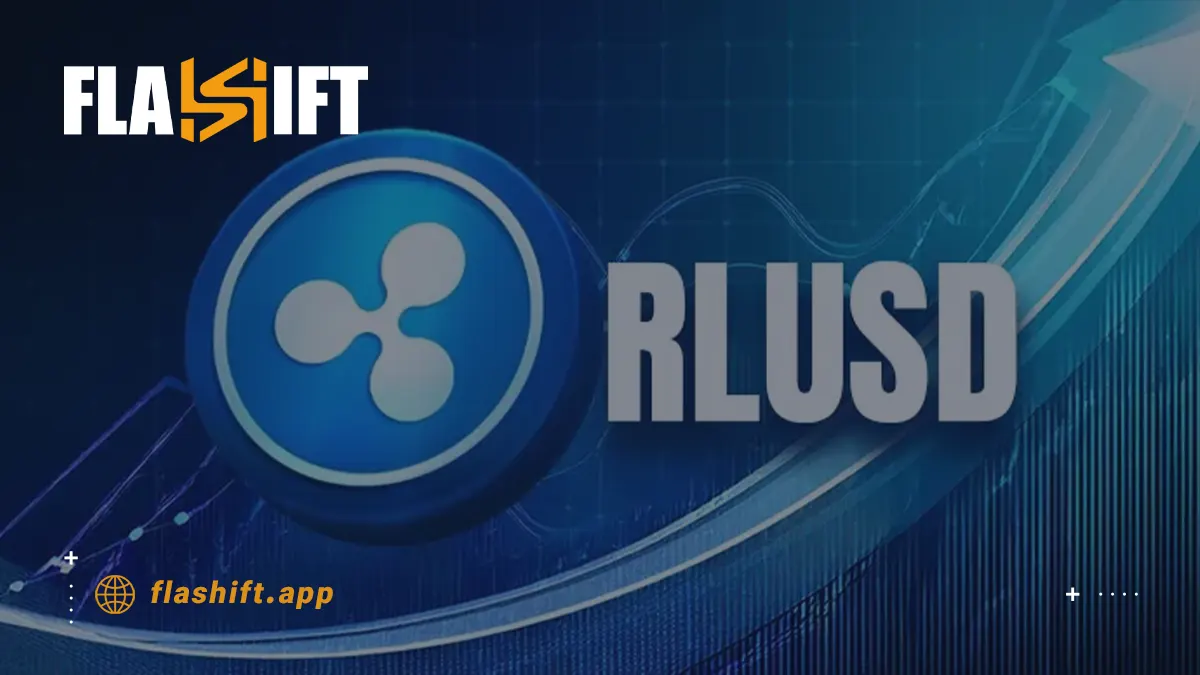
Initial Market Reception
Since its introduction, RLUSD has generated considerable interest among financial institutions, crypto enthusiasts, and institutional investors. Key factors driving this reception include:
- Ripple’s Established Reputation: Ripple’s track record with XRP and RippleNet gives RLUSD credibility. The established network of Ripple’s partners, including financial institutions and payment providers, provides RLUSD with a solid foundation for adoption in cross-border payments.
- Favorable Regulatory Focus: Ripple has emphasized compliance and transparency in the issuance of RLUSD, positioning it as a stablecoin that aligns with regulatory standards. This focus on regulatory clarity has helped build trust among both retail users and institutional players, particularly in markets with evolving regulatory frameworks.
- Market Confidence in the XRP Ledger: RLUSD benefits from the XRP Ledger’s high speed, low fees, and scalability, all of which have been well-received in the crypto space. The blockchain’s efficiency makes RLUSD an attractive option for use in both everyday transactions and larger institutional transfers.
- Early Adoption by DeFi Platforms: RLUSD’s compatibility with DeFi protocols has sparked interest from decentralized exchanges and lending platforms. Its stable value provides DeFi users with a reliable option for lending, borrowing, and liquidity provision, fueling its growing presence in decentralized finance.
Future Outlook and Adoption Predictions
- Expansion in Cross-Border Payments
Ripple has long been a leader in improving cross-border payment systems, and RLUSD is expected to be a key part of this mission. As more financial institutions and remittance services adopt RLUSD, it could significantly reduce the costs and inefficiencies currently associated with traditional payment systems. The expansion of Ripple’s partner network, particularly in emerging markets, is likely to drive continued adoption of RLUSD for international transactions. - Increased DeFi Integration
With the ongoing rise of DeFi, RLUSD’s role in decentralized finance is expected to expand. Its stable nature makes it an ideal asset for DeFi lending, borrowing, and liquidity pools. As more DeFi platforms integrate RLUSD, its utility and demand will likely grow, making it a prominent asset within the ecosystem. - Institutional Adoption and Stablecoin Regulation
As regulators continue to define the landscape for stablecoins, RLUSD’s compliance-first approach could place it in an advantageous position. Ripple’s efforts to maintain transparency and regulatory compliance may pave the way for broader institutional adoption, particularly as more enterprises look for stablecoins that meet legal and regulatory requirements. - Competition with Other Stablecoins
Although RLUSD is entering a competitive market dominated by established stablecoins like USDT and USDC, its advantages—such as faster settlement times, lower fees, and integration with Ripple’s ecosystem—could help it capture market share, particularly among businesses seeking efficient and cost-effective cross-border payment solutions. - Global Financial Inclusion
RLUSD holds the potential to drive greater financial inclusion in regions with limited access to banking services. Its accessibility and cost-effective nature make it an ideal tool for remittances and micropayments, offering a more inclusive financial option to underserved populations.
The Bottom Line
Thus, RLUSD has received quite a promising reception owing to strong backing from Ripple’s established reputation into regulatory compliance. With Ripple still pushing the envelope in cross-border payments and DeFi integrations, RLUSD finds a perfect spot for broader adoption. While it faces competition from a variety of other stablecoins, at this point, its high speed, low transaction fees, and deep integration into RippleNet give it substantial grounds to become a real player in the global digital financial ecosystem. With heightened demand for stablecoins both in traditional finance and decentralized finance, the future indeed looks bright for RLUSD, with wide-scale adoption poised in the coming years.
FAQ
1. What is RLUSD?
RLUSD is a USD-pegged stablecoin issued by Ripple, operating on the XRP Ledger, designed for fast, low-cost, and stable transactions.
2. How is RLUSD different from USDT and USDC?
RLUSD operates solely on the XRP Ledger, offering faster transaction speeds and lower fees, while USDT and USDC are available across multiple blockchains.
3. What are the main use cases for RLUSD?
RLUSD is used for cross-border payments, remittances, decentralized finance (DeFi) applications, and as a stable asset for lending and borrowing.
4. How fast are RLUSD transactions?
RLUSD transactions settle in 3–5 seconds, offering near-instant transaction finality.
5. Is RLUSD regulatory compliant?
Yes, RLUSD is designed with regulatory compliance in mind, ensuring transparency and trust for institutional and retail users.


